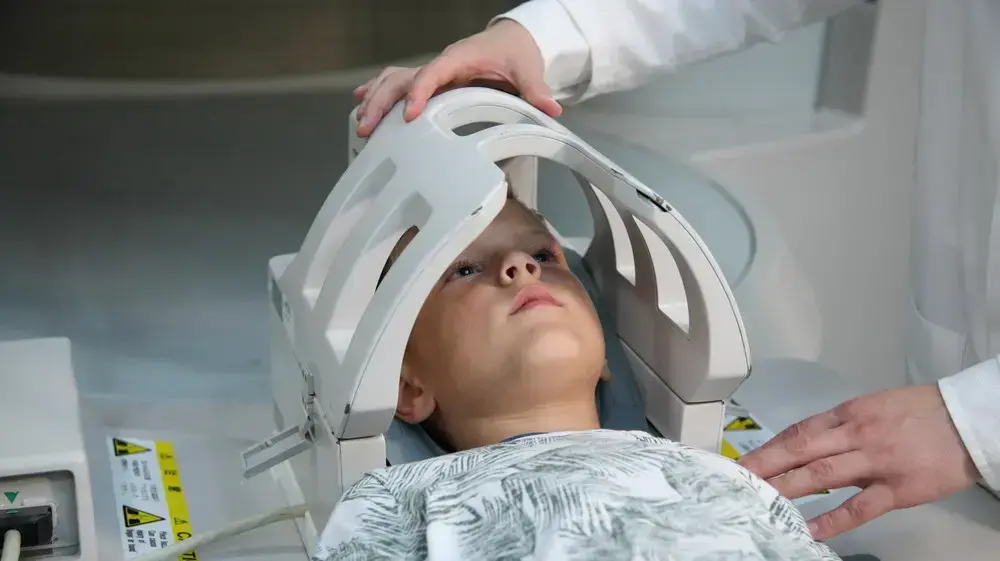Iris Cole interviews Prof. Ido Wolf of Ichilov about the developments in the field of cancer / Walla system!
For the first time ever in the world, a child suffering from a deadly type of brain tumor in the brain stem known as DIPG (Pontine intrinsic glioma) has been completely cured.
Until now, doctors could only offer radiotherapy in an attempt to slow the growth of cancer, but this breakthrough offers hope for a more effective treatment.
Brain stem cancer, which occurs almost exclusively in children, is a rare but extremely aggressive form of cancer.
The brain stem is located at the base of the brain and it connects the brain to the spine and is responsible for basic operations such as seeing, hearing, speaking, walking, eating, breathing, pulse and more.
Unfortunately, due to the location of the tumor within the brainstem, surgery to remove the cancer is not possible, and the average survival time without treatment is nine to 10 months.
Lucas, from Belgium, was 6 years old when he was diagnosed with the disease.
Desperate for help, his parents took him to France, where he enrolled in the Biological Medicine Study for DIPG Eradication (BIOMEDE).
A child undergoes an MRI brain scan/ShutterStock
BIOMEDE, which began in 2014, compared the effectiveness of three different cancer drugs - erlotinib, everolimus and dasatinib.
Crucially, however, researchers first removed a tiny fragment of each patient's tumor with a needle in order to perform a biopsy and analyze the molecular profile of each individual cancer.
This allowed doctors to assign the most appropriate drug based on each patient's biopsy results.
Lucas was one of 233 DIPG patients included in the study, and was treated with everolimus.
Speaking to AFP, BIOMEDE's principal investigator, Dr. Jacques Grill, said that "Lucas beat all the odds" and, at the age of 13, remained cancer-free. "During a series of MRI scans, I saw how the tumor completely disappeared," said Grill .
While seven other children included in the trial survived several years after diagnosis, Lucas was the only one to see his tumor disappear completely. "I don't know of another case like it in the world," Grill said.
Researchers are still trying to understand why some patients respond more to treatment than others, though The molecular differences between one cancer and another may play a significant role. For example, Grill explains that "Lucas' tumor had an extremely rare mutation that we think made his cells much more sensitive to the drug."
More in Walla!
The treatment that prolongs the lives of lung cancer patients
In collaboration with the Israeli lung cancer association
The road is still long
If the team can successfully reproduce the characteristics seen in Lucas' brain stem cancer, they may be able to use the lab-grown cells to test new drugs.
However, as exciting as it is, Grill says effective treatment for the disease is still a long way off, as drugs still have a long way to go.
"On average, it takes 10-15 years from the first procedure to become a drug - it's a long and drawn-out process," he said.
More on the same topic:
cancer
brain

